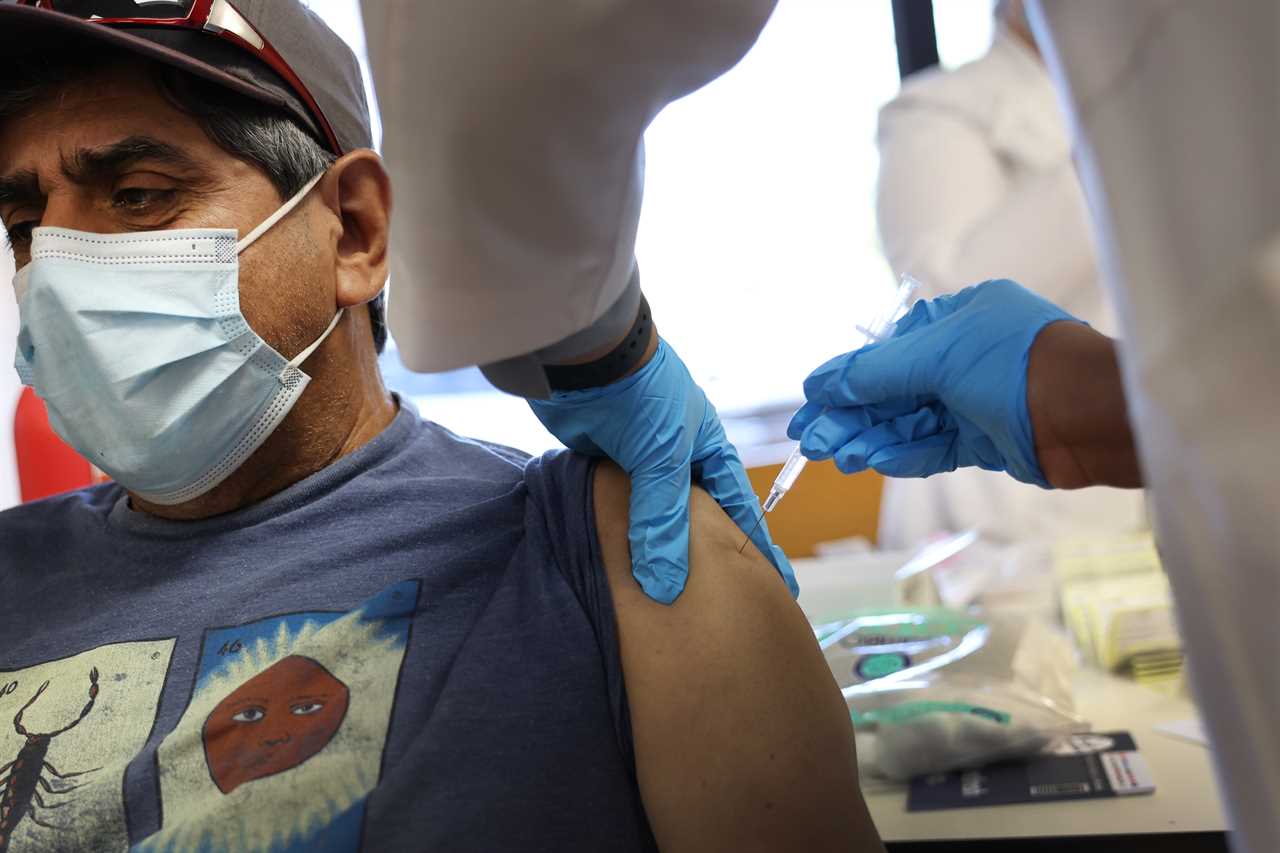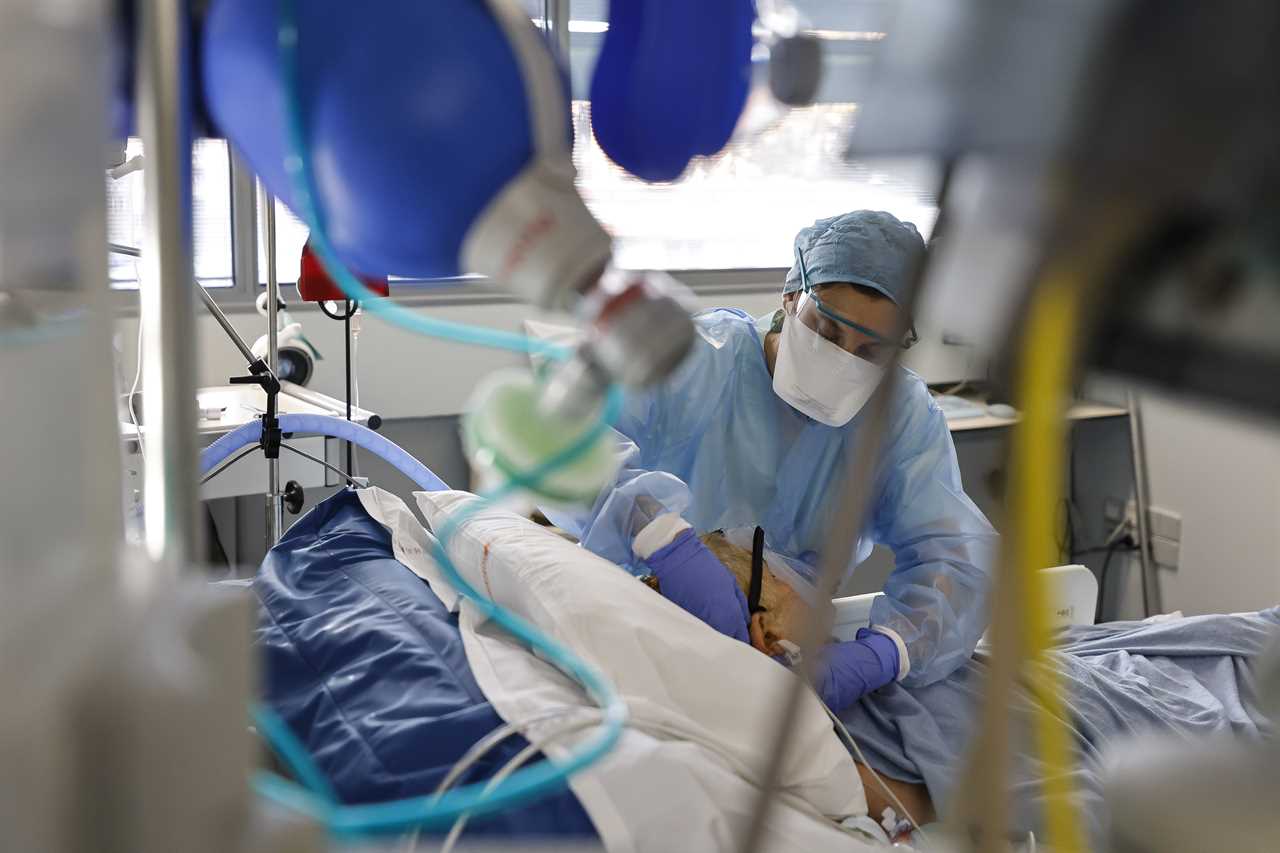
The Biden administration is racing against the dropping temperatures to convince more Americans to get the updated Covid-19 booster shot amid low uptake numbers driven by confusion over the shot, declining cases and profound pandemic fatigue.
By the end of last week, the administration expected between 13 and 15 million people out of 283.4 million Americans aged 12 and up will have opted to get the updated Moderna or Pfizer jab ahead of what officials warn could be another deadly Covid winter.
That’s just five percent of the eligible population — a sign of the stark challenge facing a Biden administration that has positioned October as a make-or-break month for the overall success of its booster campaign. Top health officials have downplayed the low takeup, saying the numbers are a good start.
But ahead of the critical stretch, doctors and advocates said people are burned out, tuned out and don’t understand why they need another booster. And even some administration officials privately acknowledge there's little internal expectation they'll see an explosion of interest.
William Schaffner, medical director for the National Foundation for Infectious Diseases, said many people involved in the effort — from doctors like him to officials at the Centers for Disease Control and Prevention who recommended the booster to Americans — didn’t grasp what it would take to get people to pay attention.
“After they make the car, they have to sell it,” Schaffner said. “The CDC has a manufacturing capacity for [vaccine] recommendations, but it has no marketing capacity. They underestimate how much work it takes to get the word out.”
In coming weeks, the administration plans to work with medical societies and other “trusted messengers” to get the word out to more Americans and launch media campaigns to reach long-term care facilities where vaccination rates are low as well as people skeptical of the Covid vaccines.
To reach more rural Americans, HHS is working with Healthy Trucking of America, a non-profit that promotes long-haul truckers’ health, to host a pop-up vaccine clinic at the Talladega Superspeedway in Alabama over the weekend. And in November, the pair plan to host another vaccine clinic at the NASCAR Cup Series Championship in Phoenix.
Both events are part of the department’s long-running ‘We Can Do This’ Covid-19 public vaccine education campaign aimed at boosting vaccination rates. But the drive is currently limiting its outreach to older adults and hard-to-reach communities due to limited funding.
Impact of ‘congressional inaction’
Overall, the scale of the administration’s new booster push will be modest, restricted by Congress’ refusal to allocate more funding for the Covid response, health officials said. They privately conceded that they’re keeping their expectations low, given Americans’ pandemic fatigue and the lack of the immediate threat of a dangerous new variant that might otherwise motivate people to prioritize the booster.
“It is obviously harder to run a campaign when Congress decides not to fund it,” White House Covid-19 Response Coordinator Ashish Jha said during a briefing on Friday. “Our media campaign, our campaign with community-based organizations — all of that is going to be more limited because of congressional inaction.”
Though the administration has not set a booster vaccination target, health experts and groups on the front lines of the campaign don’t expect the overall takeup rate will top 30 percent of the U.S. population.
Officials argued that it’s still worth trying to make progress at the margins, with the administration focused on safeguarding older Americans and making inroads in Black and Hispanic communities that traditionally suffer from health disparities.
Jha said “tens of thousands of lives” could be saved if Americans get the updated booster in the coming weeks and months.
“We're still losing 350 to 400 people a day to Covid-19,” Jha said. “Each of the last two winters we have seen increases in Covid infections, hospitalizations and deaths. There are new subvariants of Omicron emerging that are going to pose substantial challenges to several of our therapies. So our message is very simple: Don't wait. Get vaccinated.”

Time to make that message stick is running short. Hospitalizations in several European countries are already on the rise, a reliable indicator of where the U.S. is headed, and Americans’ immunity from their existing vaccinations is waning or ineffective against the now-dominant Covid strains. While the White House has yet to see definitive signs of a domestic rebound, one official said the rising case counts elsewhere have left those in the administration “unsettled.”
Some said the administration is doing what it can, given the difficult environment. John Bridgeland, co-founder and CEO of the Covid Collaborative, which is in communication with the administration on the booster campaign, said officials are on top of the pandemic’s many fronts, from boosters to testing to school ventilation.
Getting people to pay attention isn’t easy, he said. “The country is exhausted. … When pandemic meets federalism, and you’re trying to influence the decision of 300 million Americans, it’s a complex undertaking.”
But others said that if the message about the booster had been clearer from the start, more people would be getting it.
“We've heard so many questions and confusion,” said Bill Walsh, vice president of communications at AARP, the advocacy group for people age 50 and up. The group is educating tens of millions of at-risk elderly Americans about Covid-19 vaccinations throughout the pandemic.
“People don't quite understand what it is … They don't realize that this is really a different category of vaccine, and they don't quite understand fully the reason it's so effective at treating this latest iteration of Covid-19,” he said. “I think if they knew that, they'd be more willing to go take it.”
A once-a-year push
The administration’s fall vaccine push gives the White House the opportunity to reinforce the once-a-year cadence that it envisions for future booster shots — a shift that’s aimed at aligning the Covid vaccine with the annual flu shot and countering people’s perception that this vaccine is just the latest in an endless line of boosters.
The decision to rebrand the Covid vaccine as a once-a-year shot emerged out of a series of discussions earlier this fall among Biden’s top health advisers, multiple officials familiar with the matter said.
The group — which included Jha, White House Chief Medical Adviser Anthony Fauci, CDC Director Rochelle Walensky and others — was seeking ways to both revive interest in getting vaccinated and ingrain the Covid shots over the long term as part of Americans’ routine health practices. The simplicity of a once-a-year approach, officials hoped, would help do both.
“If you just told people, this is number five and get ready for six, no one’s going to do it,” one senior Biden official said. “Increasingly, we’re trying to fit this into health care, fit this into our lives.”
The approach carries its own risk. Even as it leans into its once-a-year messaging, officials know they could be forced to abandon it at the first sign of a dangerous new variant — a potential development that would likely further damage public trust in the Covid response.
For a yearly Covid-19 vaccination approach to work in the long run, the administration will have to think about baking in incentives for providers to administer the vaccine, similar to the flu vaccine, said Jay Varma, director of the Cornell Center for Pandemic Prevention and Response.
“I do worry that for large swathes of the U.S. population, you're going to need to do the same type of difficult work that's taken decades to do for influenza,” Varma said. “People's fear of Covid has declined, broadly speaking, so you can't rely on their own internal motivation to be a major driver for a large percentage of the population to get vaccinated.”
The stakes are high both in the long term and this coming winter, as the elderly and immunocompromised continue to bear the brunt of the virus.
Seventy percent of the Covid-19 deaths today are among people 75 and older, according to the administration. This spring and summer, as national cases increased, Covid-19 deaths rose for all ages but rose faster for older adults, according to new research from the Kaiser Family Foundation. More than 11,000 people 65 and older died due to Covid-19 in both July and August.
If vaccination rates stay where they have been, the country could be in for a grim winter and spring.
A new report from the Commonwealth Fund projected how many lives could be saved in different vaccination scenarios over the next six months. If the administration and its partners succeed, and achieve at least the level of coverage of the 2020-2021 flu vaccine, seven-day average daily deaths could come down from the current range of around 320 to 400 to just over 200. If 80 percent of the eligible population gets boosted, those numbers could come down to under 50.
But if they continue at the baseline of August’s daily vaccination rate, the country could slide back to worse days, and top 1,200 average daily deaths.
----------------------------------------
By: Krista Mahr and Adam Cancryn
Title: Biden administration scrambling to get more people boosted before winter
Sourced From: www.politico.com/news/2022/10/11/biden-covid-booster-winter-00061053
Published Date: Tue, 11 Oct 2022 04:00:00 EST
Did you miss our previous article...
https://consumernewsnetwork.com/politics-us/powell-the-feds-powell-is-threatening-a-recession-to-squash-inflation-many-democrats-are-okay-with-this






